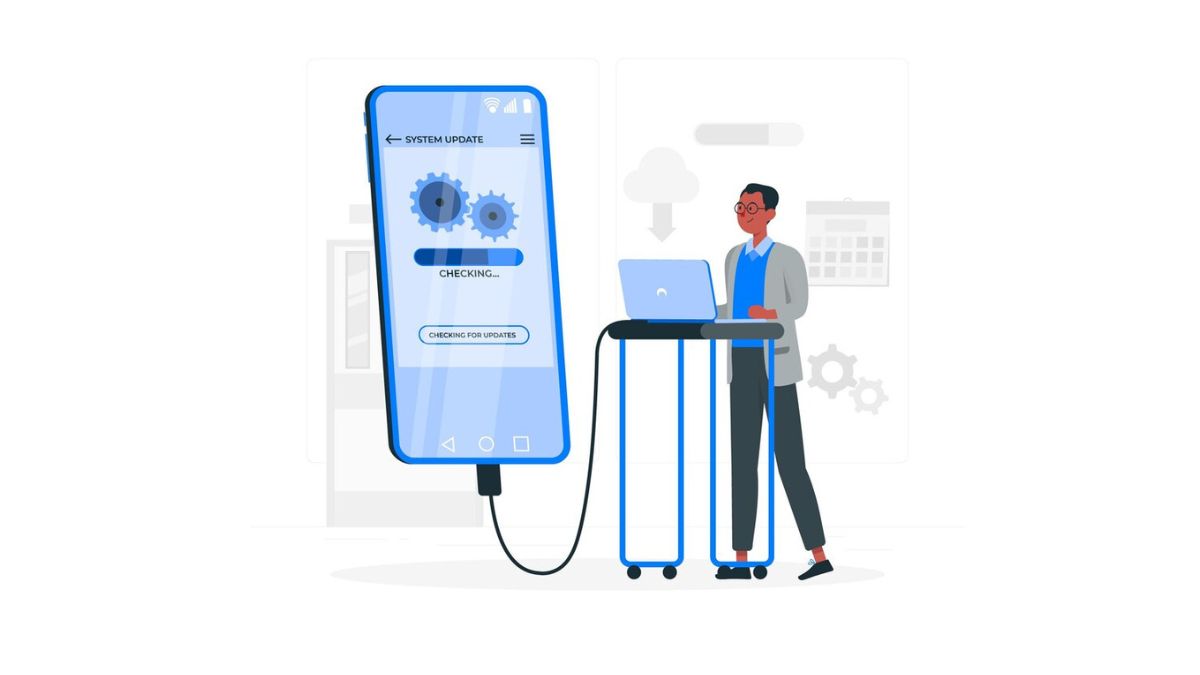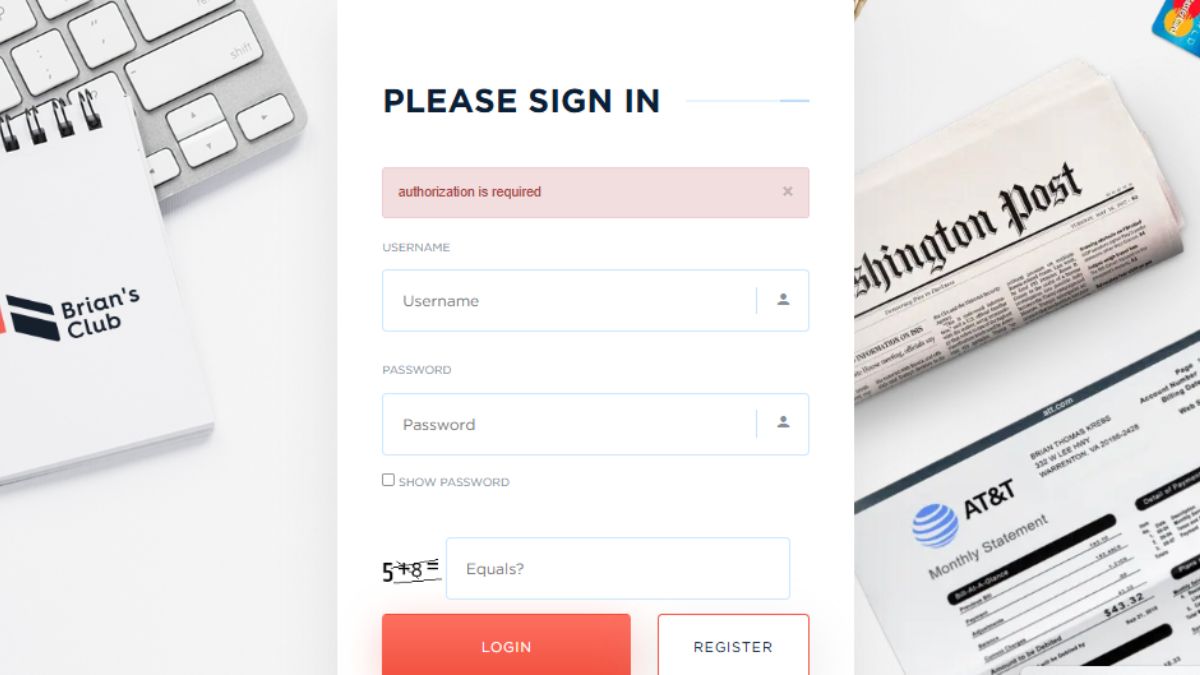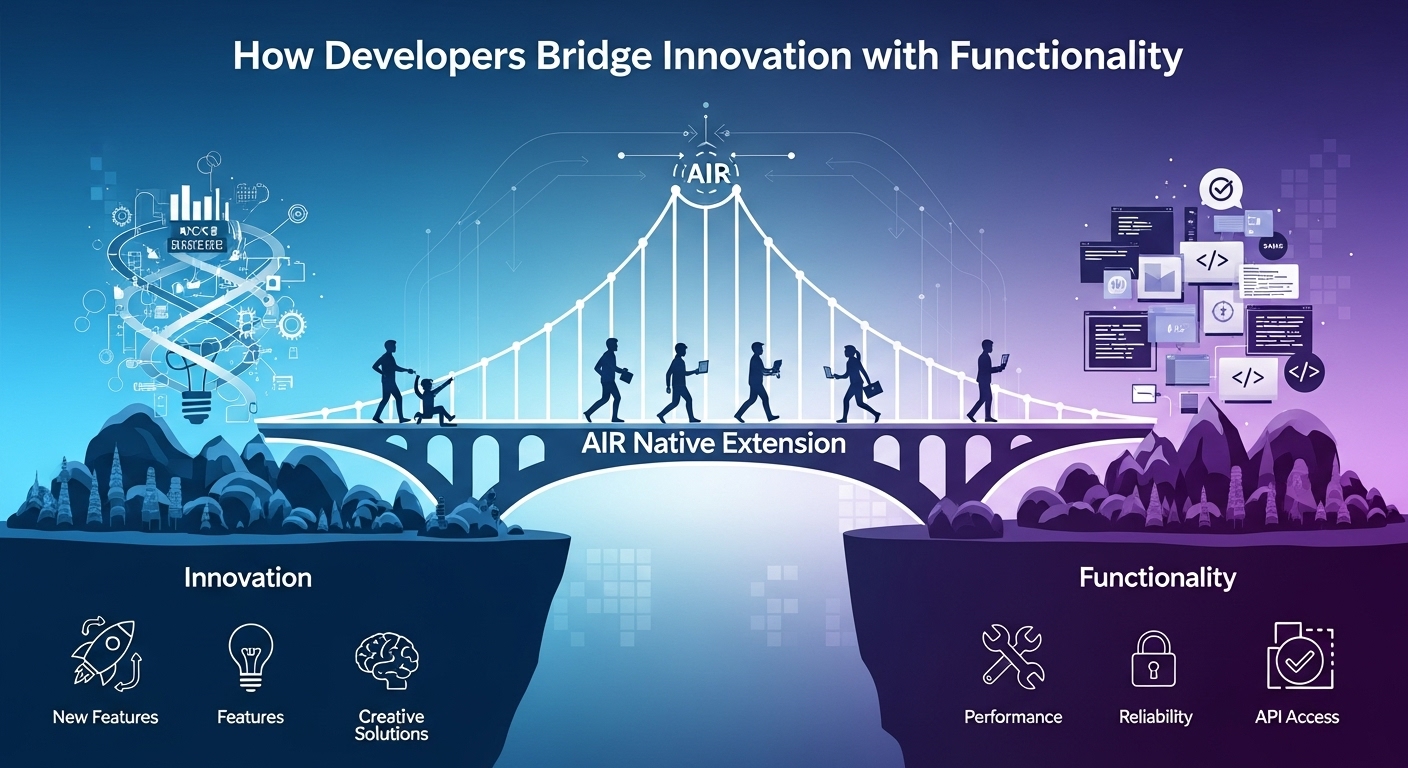TECHNOLOGY
Enterprise Responsive Testing: Cross-Device Implementation Guide

Many websites and applications do not work properly on all devices, leading to issues like distorted layouts, broken functionality, and poor performance. A website that looks fine on a desktop may become difficult to navigate on a mobile screen due to misalignment or slow loading times. Responsive testing helps solve this problem by checking how applications perform across different devices, screen sizes, and browsers.
A responsive checker helps run mobile-friendly tests and identify layout issues and confirm that the design adapts correctly to various screen resolutions. In this article, we will explore different cross-device testing methods, challenges, and best practices to improve application performance across multiple platforms.
What Is Responsive Testing?
Responsive website testing checks whether a website displays and functions correctly across different screen sizes and devices. It typically uses CSS media queries to adjust the layout based on the device accessing the site.
In simple terms, this testing helps verify that your website looks and works as expected on desktops, tablets, and smartphones. A site that adapts well to all resolutions creates a better user experience and gives your business a competitive edge.
Responsive testing is usually part of the final phase of a responsive web design project. It’s closely tied to cross-browser testing, since both aim to improve how a website looks and behaves under different conditions. The main difference is that responsive testing checks adaptability across screen sizes, while cross-browser testing focuses on browser-specific behavior.
Why is Cross-Device Testing Required?
Cross-device testing is important because users access applications from many types of devices and operating systems. Differences in screen sizes, resolutions, and OS versions affect how an application works. Testing on multiple devices helps confirm that users do not face issues while using the application.
According to Statista, in December 2022, smartphones made up 77% of mobile device sales, followed by tablets at 11.5% and smart wearables at 8.1%. This highlights the need to test applications on different device types.
Operating system differences also impact how an application functions. iOS users may experience different features or bugs compared to Android users. Statista reported that in the last quarter of 2023, Android had a 70.1% market share, while iOS had 29.2%. This shows why testing applications on both platforms is important to confirm proper functionality for all users.
How Do You Choose What Devices to Test On?
With many devices, screen sizes, and operating systems available, it is important to decide which configurations to test. Testing on every device is not possible, so the focus should be on selecting a diverse range of options that match the user base while staying within time and budget limits.
The selection of devices depends on the project requirements. In some cases, testing may be done on a single device with a specific OS and screen size. This approach is useful when an application is designed for a particular device.
Popular web analytics tools can help identify commonly used devices and operating systems. These tools provide real-time data on OS market share and screen sizes. If user analytics are available, they can help refine testing choices by focusing on the most relevant configurations.
Approaches to Perform Cross-Device Testing
Testers can use two methods for cross-device testing:
- Manual Cross-Device Testing
- Automated Cross-Device Testing
These approaches help confirm that mobile applications work properly on different devices.
Manual Cross-Device Testing
Manual testing requires testers to interact with an application like an end-user. They check usability, performance, and functionality across various devices to find issues.
Steps for Manual Cross-Device Testing
- Select Devices: Pick devices that reflect your target audience. Cover a range of screen sizes, operating systems, and resolutions. Include both older and newer models to catch layout issues and compatibility problems.
- Test Planning: Create a test plan with test cases for each selected device. Prioritize important functionalities and commonly used devices to speed up testing.
- Test Execution: Testers check the user interface, navigation, and responsiveness. They evaluate the application under different network conditions like 5G, 4G, 3G, and Wi-Fi. They also test in both portrait and landscape modes. Regression testing is performed to confirm that updates do not affect functionality.
- Documentation: Any issues found are recorded, and detailed feedback is shared with the development team.
Limitations of Manual Cross-Device Testing
- Works well for a small number of devices but becomes expensive and time-consuming for large-scale testing.
- Human errors may lead to missed issues or incorrect test execution.
- Testing consistency may vary since different testers may follow different methods.
To overcome these challenges, automated testing can be used.
Automated Cross-Device Testing
Automated testing uses tools and frameworks to test applications on multiple devices. It speeds up testing and reduces manual effort.
Steps for Automated Cross-Device Testing
- Define Test Scenarios and Requirements: Start by identifying the devices and screen sizes you want to cover. List the test scenarios for each; these could include layout checks, navigation behavior, or functional flows like form submissions.
- Choose Automation Tools: Pick tools that match your project needs and support the target devices and browsers. Selenium, Appium, or tools like LambdaTest are common choices for cross-device testing.
- Create Test Scripts: Write scripts that can be reused across platforms. Keep them modular so they handle variations in UI behavior across screen sizes or operating systems. Consider writing tests in a framework that supports parallel execution to speed things up.
- Implement Parallel Testing: Run tests on multiple devices at the same time to speed up the process.
- Set Up Continuous Integration (CI): Integrate testing with CI/CD pipelines to automate tests with every code change.
- Monitor Test Execution: Track test results to identify and fix failures.
- Update Test Scripts Regularly: Modify scripts to match software updates and new device configurations.
Where to Run Cross-Device Tests?
Different testing methods help confirm that applications work properly across various devices. Below are the main options for running cross-device tests:
Physical Devices
Physical devices are actual smartphones and tablets used for testing instead of virtual versions. They cover different screen sizes, operating systems, and hardware configurations, including folding phones and wearables.
This method is useful for testing features like cameras, sensors, GPS, facial recognition, and motion detection. Testing on real devices helps find usability issues under real-world conditions. However, using physical devices for minor checks, such as verifying if an app launches correctly, may not be practical. It can also be expensive and time-consuming, especially for businesses with limited resources.
Real Device Cloud
A real device cloud provides access to Android and iOS devices over the internet. This method allows testers to run applications on real hardware without maintaining an in-house device lab.
Setting up and updating physical devices requires ongoing investment, but cloud-based services manage these tasks. Real device cloud testing supports features like biometric authentication, camera functions, Bluetooth, and sensors. It helps teams test applications without needing to buy and maintain a large collection of devices.
Emulators and Simulators
Emulators and simulators create virtual environments for testing applications. They provide a cost-effective way to check basic functionality without needing real devices.
While both serve a similar purpose, they have differences. Emulators mimic the entire hardware and software of a device, while simulators focus on software behavior. These tools help with early-stage testing and are easy to set up. They also work well in Continuous Integration (CI) environments for automated testing.
However, emulators and simulators cannot fully replicate real-world conditions. They may not support features like biometric authentication, physical sensors, or performance testing under network fluctuations. For tests requiring real user interactions, physical devices or cloud-based testing is a better choice.
Each method has its advantages and limitations, and choosing the right approach depends on the testing needs, available resources, and project requirements.
Cross-Device Testing Strategies
To effectively perform cross-device testing, effective strategies should be followed. Next, let’s look at some key strategies that can be used for cross-browser and device testing.
- Planning and Analysis: Start by identifying the target devices, operating systems, and browsers used by the customers through research and analytics. Create device matrices to prioritize testing based on usage data to confirm comprehensive coverage across different device types.
- Responsive and Adaptive Design Testing: Implement responsive design principles to make sure the application adapts to different screen sizes and orientations. Test adaptive features to confirm that different layouts and functionalities are correctly displayed and function across all targeted devices.
- Visual and Interface Testing: Conduct thorough visual testing to verify that UI elements, layouts, images, and text display correctly across all devices. Test the application’s interface usability to confirm a good user experience, especially on devices with smaller screens.
- Functional Testing Across Devices: Validate cross-platform consistency by testing all functionalities across different devices. This includes assessing how the application handles user inputs, processes data, and maintains feature accessibility across various platforms and devices.
- Performance Testing: Check load times, responsiveness, and system resource usage across multiple devices. Track CPU, memory, and battery consumption to spot performance issues that might not be visible through UI alone.
- Security Testing Across Platforms: Verify that data is handled securely during transmission and storage on all target devices. Test login flows, session handling, and permission checks to confirm that user data stays protected across platforms.
- Test Automation: Automate repetitive tests using tools to execute tests consistently across different devices and platforms. Integrate automated tests into a CI/CD pipeline to continuously verify application functionality as new code is deployed.
Challenges of Cross-Device Testing
Cross-device and browser testing comes with several challenges, including:
- Testing across many devices and screen resolutions requires a large inventory, which can be expensive and difficult to manage.
- Web applications must work on different browsers and versions, but frequent updates make it challenging to keep tests up to date.
- Variations in processing power, memory, and display quality affect how applications perform. This makes it harder to test speed and responsiveness across devices.
- Some devices support gestures or navigation methods that others do not. Testing for multiple input types adds complexity to the process.
- Automated tests must cover multiple device scenarios, which requires setting up and managing different test environments. This increases the effort needed to maintain test scripts.
- Creating and maintaining the necessary systems for cross-device testing requires significant investment in both infrastructure and resources.
Best Practices for Cross-Device Testing
Following best practices helps improve the accuracy and effectiveness of cross-device testing.
- Use tools like Google Analytics and user surveys to find out which devices and screen sizes are most popular among users. Focus testing on these configurations.
- Create a test plan that covers the most important features and operating systems. Testing critical functionalities first helps identify major issues early.
- Use emulators and simulators for early-stage testing, but always verify on real devices. This helps confirm how the application behaves in real-world conditions.
- Test on older devices and operating systems to check compatibility for users who have not upgraded. This helps maintain a smooth experience for all users.
- Run tests on Wi-Fi, mobile data, and slower networks to check how the application performs under varying conditions. This helps find connectivity-related issues.
- Collect feedback from real users to check if the application is not only functional but also easy to use. User insights help refine the overall experience.
Tools for Cross-Device Testing
Cross-device testing tools help testers make sure their applications work smoothly across different devices. Here are the top 6 tools,
- LambdaTest: It is an AI-native test orchestration and execution platform. It helps you perform manual and automation testing on over 5000+ real desktop browsers, devices, and operating system combinations.
- Appium: Appium is an open-source automation tool for testing Android and iOS applications. It supports hybrid apps and helps automate functional testing to check if an application performs as expected.
- Espresso: Espresso is a testing framework developed by Google for Android applications. It provides tools for writing UI tests that check interactions, layout, and responsiveness. It includes APIs like ViewMatchers and ViewActions to simulate user interactions.
- XCUITest: XCUITest is a testing framework developed by Apple for testing iOS applications. It allows developers to create automated tests in Swift or Objective-C to verify app functionality on iPhones and iPads.
- Robotium: Robotium is an open-source testing tool for Android applications. It helps create test cases for different scenarios, such as checking how an app responds under various conditions and whether it meets functional requirements.
When it comes to automating mobile web applications, Selenium mobile testing is a popular choice. It leverages the powerful Selenium framework, which is typically used for web applications, to test mobile browsers on real devices or emulators.
Selenium mobile testing refers to using the Selenium framework to automate testing for mobile web applications. While Selenium is primarily designed for web application testing, it can be extended to mobile testing through Selenium WebDriver with mobile browsers on real devices or emulators.
Conclusion
In conclusion, enterprise responsive testing helps confirm that applications work correctly on different devices and screen sizes. It helps deliver a consistent experience for users across smartphones, tablets, and desktops. Manual testing allows testers to check usability and functionality by interacting with applications on real devices. Automated testing speeds up the process by running tests on multiple devices at the same time.
Testing on physical devices, real device clouds, emulators, and simulators provides different ways to verify application behavior. Cross-device testing comes with challenges like managing a large number of devices and handling differences in operating systems.
Following best practices like testing on real devices, running tests under different network conditions, and automating repetitive tasks helps improve accuracy. Using testing tools helps teams check applications more efficiently. A well-planned approach to testing helps improve application quality and user experience.
TECHNOLOGY
How Customer Segmentation Software Can Improve Marketing ROI

In the competitive landscape of digital marketing, one of the most crucial tactics for maximizing the return on investment (ROI) is understanding and segmenting your customer base. Customer segmentation software allows businesses to categorize their audience into distinct groups based on various characteristics and behaviors. This strategic division enables marketers to tailor campaigns to each segment’s unique needs and preferences, boosting engagement and conversion rates. By leveraging this targeted approach, companies can see a significant lift in marketing ROI. In this article, we’ll explore the role of customer segmentation software in enhancing marketing efforts.
Understanding Customer Segmentation Software and Marketing ROI

Customer segmentation breaks down broad audiences into specific groups using demographic, geographic, psychographic, and behavioral insights. This sharper understanding allows businesses to tailor campaigns with precision, boosting engagement while allocating budgets more efficiently for maximum impact.
Platforms like Adestra enable marketers to focus on high-value segments and build long-term customer relationships. By leveraging top customer segmentation software, businesses can improve campaign relevance, increase customer lifetime value, and drive stronger marketing ROI.
Identifying Target Market Subsets with Segmentation Tools
Segmentation tools empower marketers to divide broad markets into precise customer groups with shared traits, enabling sharp targeting and tailored messaging. By uncovering patterns in consumer data, these platforms improve strategic planning, making campaigns more relevant and efficient. They help reveal niche clusters that may have gone unnoticed, offering new growth opportunities where brands can secure loyalty before competitors enter the space.
With advanced segmentation software, companies can monitor shifting customer behaviors and anticipate emerging trends. Rapid access to these insights supports agile adjustments in marketing efforts, ensuring constant alignment with evolving demand. High-quality segmentation tools are critical for navigating complex markets, allowing businesses to act decisively, personalize engagement, and maximize returns through informed, data-driven decisions.
Enhancing Personalization and Customer Engagement
Segmentation software empowers marketers to deliver personalized campaigns by revealing distinct customer attributes, behaviors, and preferences. Tailored messaging, product suggestions, and offers resonate deeper with each segment, boosting engagement and connection. When recipients see content aligned with their interests, they are more inclined to interact, develop greater trust, and move confidently toward conversion.
Personalization also strengthens loyalty and evolves customers into active advocates. Feeling understood encourages repeat purchases and word-of-mouth promotion. With segmentation software continually collecting interaction data and feedback, marketers refine and sharpen their understanding over time. This ongoing cycle ensures messaging stays timely, relevant, and customer-centric at every touchpoint, solidifying the brand’s position in an increasingly competitive marketplace.
Streamlining Marketing Efforts for Cost-Effectiveness

Customer segmentation software enhances marketing precision by enabling teams to focus on high-value segments rather than deploying blanket strategies. This targeted approach reduces redundant activity and streamlines workflows, allowing for smarter allocation of marketing resources. With data-backed insights, companies can make sharper decisions about where to invest, leading to measurable improvements in campaign performance and budget utilization.
Segmentation also supports smarter forecasting by revealing how different groups will likely respond to future initiatives. This predictive clarity enables more accurate planning, reducing costly missteps and aligning spend with expected outcomes. The ability to quickly pivot strategies based on evolving segment behavior gives marketers the agility required to stay ahead in dynamic environments.
Measuring the Impact of Segmentation on Campaign Performance
Segmentation effectiveness is best gauged through key performance indicators like conversion rates, click-through rates, and customer acquisition costs. Comparing these metrics before and after segmentation allows businesses to quantify the improvements achieved. By leveraging segmentation analytics, marketers can directly connect campaign tactics with customer behaviors, understanding how specific actions influence responses. This insight enables real-time optimization, enhancing ROI and refining strategies based on concrete data.
Long-term monitoring of segmented groups reveals trends in brand loyalty and retention, spotlighting initiatives that strengthen customer relationships. A/B testing further isolates segmentation’s true impact by comparing segmented campaigns against control samples, validating its contribution to performance. These controlled insights inform future marketing decisions, guiding consistent enhancements in segmentation success.
Overall, the merits of customer segmentation software in driving up marketing ROI are manifold. By enabling precise targeting, personalized engagement, operational efficiencies, and measurable outcomes, this technology stands as a cornerstone of successful marketing strategies. For businesses looking to sharpen their competitive edge and maximize returns, the integration of robust customer segmentation into their marketing programs is not just beneficial—it’s essential.
TECHNOLOGY
Beyond the Gateway: Decoding the as a Cybersecurity Paradigm

In the sprawling digital metropolis of the internet, every doorway tells a story. Some are simple garden gates, while others are fortified entrances to high-value citadels. The humble login screen—often just a pair of empty fields for a username and password—is this doorway. And in the specialized world of digital marketplaces, few login gateways are as enigmatic and telling as the bClub login.
For the uninitiated, bClub operates in the opaque corners of the web, a platform often associated with exclusive, member-only access to digital goods. But looking at it purely through that lens misses the larger, more technologically significant picture. The bClub login isn’t just a key to a door; it’s a fascinating case study in modern cybersecurity, digital trust, and the evolving battle between access and exclusion.
The Frontline: What the bClub Login Page Doesn’t Show You
When you encounter a login portal like the bClub login, you’re interacting with the tip of a technological iceberg. The visible elements are simple: an input field, a password mask, and a submit button. But beneath the surface, a complex dance of protocols is underway.
The Handshake (HTTPS & SSL): Before you even type a single character, your browser and the bClub server perform a “handshake.” This establishes a secure, encrypted tunnel via HTTPS. The padlock icon in your address bar is the user-friendly signal of this. For any platform dealing in sensitive access, this isn’t just a feature; it’s the foundation. A failure here would be like sending a classified document on a postcard.
Credential Hashing: When you hit “enter” after the bClub login, your password should never, ever be stored or transmitted in plain text. A robust system will immediately hash it—running it through a one-way mathematical function that turns it into a unique string of gibberish. The server compares this hash to the one stored in its database. This means that even if the database is breached, the attackers don’t get your actual password, just its indecipherable hashed version.
The Silent Guardian: Rate Limiting: This is a critical, yet invisible, security feature. The bClub login mechanism almost certainly employs rate limiting. This means it will block further login attempts from an IP address after a certain number of failures in a short period. It’s the digital equivalent of a bank locking its doors after too many incorrect safe-cracking attempts, effectively neutralizing brute-force attacks.
A Double-Edged Sword: Exclusivity vs. Vulnerability
The very nature of a platform like bClub creates a unique threat model. Its exclusivity is its brand, but this also makes it a high-value target.
The Human Firewall: In such ecosystems, the security of the entire community is only as strong as its weakest member’s password. A credential stuffing attack—where hackers use username/password pairs leaked from other breaches—can be highly effective if users practice poor password hygiene. The bClub login, therefore, becomes a single point of failure that depends heavily on user education.
The “Invite-Only” Mirage: While an invite-only system feels more secure, it can create a false sense of security. Members might assume the platform is “safe by design” and lower their personal guard, neglecting to use unique passwords or enable additional security measures where available.
The bClub Login as a Metaphor for Modern Digital Trust
Ultimately, the bClub login is more than a technical step; it’s a ritual of trust. You are presenting your digital identity to a gatekeeper, trusting it to:
Verify you accurately. (Is it really you?)
Protect your data. (Is your password safe?)
Control access strictly. (Are imposters kept out?)
This micro-interaction is a paradigm for every digital service we use, from our online banking to our social media accounts. The principles that secure the bClub login—encryption, hashing, and intelligent access control—are the very same principles that protect our most sensitive personal and financial information across the web.
Conclusion: The Universal Lesson in a Niche Gateway
While the bClub login serves a specific and niche community, its architecture and the challenges it faces are universal. It reminds us that in 2024, a login is never just a login. It is the frontline of digital defense, a carefully engineered checkpoint balancing user convenience with formidable security protocols.
The next time you encounter any login screen, pause for a second. Remember the invisible handshake, the silent hashing, and the quiet work of rate limiting happening in the blink of an eye. Understanding the technology behind these gateways is the first step toward becoming a more secure and savvy citizen of the digital world.
TECHNOLOGY
Air Native Extension: How Developers Bridge Innovation with Functionality

In today’s rapidly evolving tech landscape, success is no longer measured solely by the speed of app deployment or the number of downloads. The most impactful tools and developers are those who bridge technical excellence with practical solutions—shaping digital products that thrive while improving user experience. One such breakthrough is air native extension, a technology that allows developers to expand Adobe AIR applications with native platform functionality, redefining what’s possible for cross-platform apps.
This article explores what air native extensions are, how they work, and why they represent the next generation of tools for developers who want to integrate purpose with performance.
What Is an Air Native Extension?
An air native extension (ANE) allows Adobe AIR applications to tap into native APIs and capabilities on operating systems like Android, iOS, Windows, and macOS. By using ANEs, developers can access device features—such as GPS, Bluetooth, push notifications, or the camera—that aren’t available through standard AIR APIs.
In other words, ANEs bridge the gap between Adobe AIR’s cross-platform flexibility and each platform’s unique capabilities. This makes it possible for one codebase to deliver richer functionality across multiple devices—a huge benefit in today’s fragmented tech ecosystem.
A Development Philosophy Rooted in Purpose
At the heart of air native extension usage is a philosophy of purpose-driven development. It’s not just about creating an app; it’s about enhancing user experience while maximizing efficiency for developers. This philosophy emphasizes:
-
Empathy for users: Understanding the need for seamless, native-like experiences regardless of platform.
-
Efficiency for developers: Leveraging one codebase but still accessing advanced native features.
-
Collaboration: Encouraging open-source ANEs and partnerships within developer communities.
This mirrors the growing recognition that modern apps cannot exist in isolation—they’re embedded in ecosystems of devices, users, and platforms that must also thrive.
Bridging Cross-Platform Success with Native Power
What makes air native extension especially noteworthy is its ability to merge cross-platform convenience with native-level capabilities. Examples of this approach include:
-
Access to device sensors: GPS, accelerometers, gyroscopes, and more.
-
Integration with system services: Push notifications, in-app purchases, and background services.
-
Enhanced multimedia: Using native video, camera, or audio frameworks for better performance.
By embedding these possibilities into AIR apps, developers illustrate how software can create a virtuous cycle—stronger user experiences drive higher engagement, which in turn sustains the app’s success.
Influence in the Developer Community
As a rising toolset, air native extension has transformed how developers approach Adobe AIR projects. Online communities, forums, and repositories have emerged where developers share open-source ANEs, tutorials, and support.
This community-driven environment enables developers to:
-
Reach broader audiences with more capable AIR apps.
-
Engage with younger developers who value cross-platform efficiency.
-
Inspire others to integrate native capabilities into their AIR projects.
Just as digital platforms amplify responsible leadership, developer communities amplify innovation and skill-sharing.
A Model for the Next Generation of Developers
The rise of air native extension reflects broader shifts in developer expectations, particularly among professionals who want:
-
Authenticity: Genuine alignment between app marketing and performance.
-
Diversity of functionality: Catering to multiple device ecosystems.
-
Global reach: Recognition of interconnected platforms and user needs worldwide.
By championing these principles, ANEs position developers as trailblazers—creating apps that feel native on any device while maintaining the agility of cross-platform development.
Challenges and Opportunities
Like any technology bridging multiple ecosystems, air native extension presents challenges:
-
Maintenance: ANEs must be updated as platforms evolve.
-
Learning curve: Developers need some knowledge of platform-specific languages (Objective-C, Java, C++).
-
Performance testing: Each platform behaves differently, requiring thorough QA.
Yet these challenges also present opportunities for innovation. Developers with ANE expertise are in high demand, and businesses benefit from reduced development costs when one team can cover multiple platforms effectively.
Best Practices for Working with Air Native Extensions
To get the most out of ANEs, developers can follow these tips:
-
Start with official documentation: Adobe provides guides for building and integrating ANEs.
-
Use reputable sources: Download ANEs from trusted developers or build your own to ensure security.
-
Optimize for performance: Test on all platforms to catch memory leaks or slowdowns.
-
Plan for updates: Align ANE development with OS release cycles to maintain compatibility.
-
Engage with the community: Forums and GitHub repositories often provide open-source ANEs and sample projects.
These practices ensure a smoother development cycle and a better end-user experience.
Beyond Functionality: A Shift in App Development Culture
Working with air native extension isn’t just about adding features—it’s about adopting a mindset:
-
Efficiency without compromise: Delivering native-like performance without writing multiple codebases.
-
Innovation with purpose: Using platform capabilities responsibly to enhance—not overwhelm—the user experience.
-
Collaboration as strength: Learning from other developers and sharing improvements.
This mirrors the shift in the tech industry toward community-driven innovation and transparent, open development.
Examples of Air Native Extension in Action
-
Push Notifications: ANEs integrate Android and iOS notification systems seamlessly.
-
In-App Purchases: Developers implement monetization without separate native projects.
-
Augmented Reality: ANEs tap into device cameras and sensors for immersive experiences.
-
File System Access: Apps manage storage like a native app would, improving usability.
These examples show how ANEs expand the possibilities of what AIR applications can achieve.
Looking Ahead
As air native extension technology continues to evolve, expect stronger integrations with emerging platforms—smart TVs, IoT devices, wearables—and deeper support for cloud-based services. With Adobe AIR remaining a niche but powerful tool for cross-platform development, ANEs will likely become even more important for keeping apps competitive and innovative.
In a world where users increasingly demand seamless, high-performance experiences, developers who master ANEs are well-positioned to set the standard.
Conclusion
Air native extension is more than a development tool—it’s a paradigm shift. By enabling Adobe AIR applications to access native device features, ANEs combine the efficiency of cross-platform development with the power of platform-specific functionality.
In a tech environment where businesses and users alike expect agility and quality, ANEs demonstrate that you can have both. Developers who embrace this approach aren’t just coding apps; they’re building bridges between ecosystems, ensuring that digital experiences remain innovative, inclusive, and purpose-driven.
-

 BLOG10 months ago
BLOG10 months agoSlothokiturbo.net: Exploring the World of Online Gaming and Community
-

 BLOG7 months ago
BLOG7 months agoLiteroticatags: Exploring the World of Erotica and Its Online Community
-

 BLOG11 months ago
BLOG11 months agoErothtos: Understanding Its Role in Today’s World 2025
-

 BLOG10 months ago
BLOG10 months agoUse 1.5f8-p1uzt – A Comprehensive Guide!
-

 BLOG11 months ago
BLOG11 months agoLeah Gettens: Everything You Need To Know
-

 BLOG11 months ago
BLOG11 months agoWatchmenontheall Calvin: An Exploration of Themes, Characters, and Significance
-

 TECH11 months ago
TECH11 months agoMansrufer: Pioneering Progress in Technology
-

 BLOG7 months ago
BLOG7 months agoJonathonSpire: We Learn About Her Career
